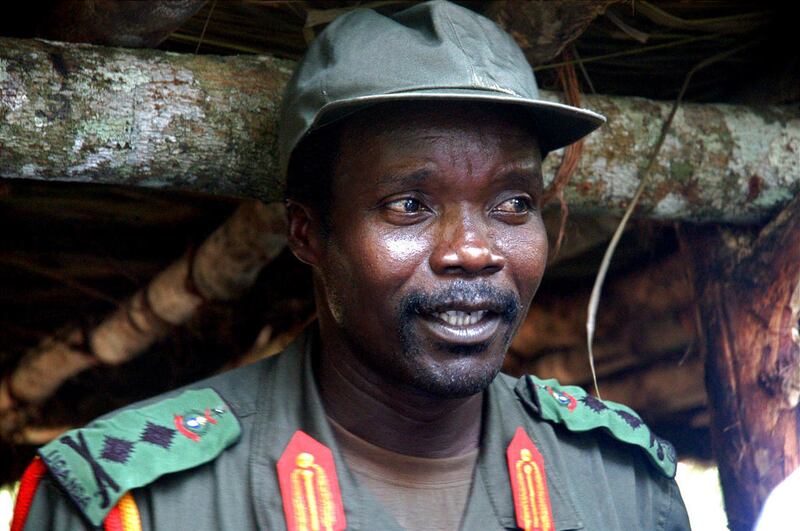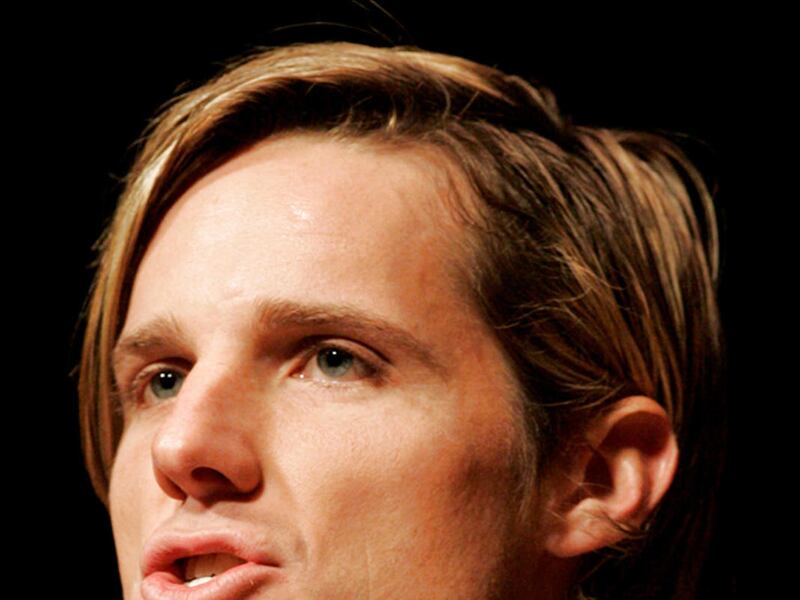When it comes to promoting a social cause, my thought is that anytime you are raising awareness, you are moving in the right direction. – Beth Kanter, author
Related: Internet activism: Can 'Kony 2012' viral video help Uganda?
Related: Kony 2012 video goes viral, draws criticism
Before he introduced the world to Joseph Kony and brought the atrocities of the Lord's Resistance Army into American living rooms with his now-famous viral video, Jason Russell challenged the world to conduct an experiment.
"Right now, there are more people on Facebook than there were on the planet 200 years ago," said Russell, co-founder of the San Diego nonprofit Invisible Children, as he opened the video with footage of the earth shimmering with electricity. "This connection is changing the way the world works."
What if, he asked his viewers, ordinary people could leverage those connections to get an African warlord arrested?
The experiment got off to a dazzling start. In its first two weeks, Invisible Children's 30-minute documentary outlining Kony's kidnappings and killings as the head of a Ugandan militia has registered more than 112 million views. Some social media experts estimate that makes the film, called Kony 2012, both the most popular and the fastest growing ad for a brand, cause or political campaign to ever hit the Web. But as talk of the viral video moved from YouTube and Facebook to living rooms and classrooms, critics cried "Slacktivism!" Naysayers, ranging from Ugandan leaders to international aid experts, have slammed the campaign for oversimplifying Uganda's 26-year conflict and making Kony out to be the singular bad guy in this horrendous tale of human rights abuses. Critics also looked down their noses at Invisible Children for spending more money on online activism than on-the-ground programs that help improve life for Ugandans.
Only time will tell whether Invisible Children with its growing army of virtual supporters can take down an African warlord, but there's evidence to suggest that, if done right, online enthusiasm for a cause can translate into real-world change. For better or for worse, experts say the Kony 2012 campaign represents the future of social activism. Kony 2012 offers some insights — good and bad — into how to capture the world's attention.
"Jason Russell is right: this is a new world," said Stephanie Rudat, founder of Alliance for Youth Movements, a nonprofit that focuses on how people use connective technologies to make social change. "NGOs without a digital presence are handicapping themselves tremendously."
Clicks for change
While the world has been obsessing over Kony 2012's rapid rise to prominence on YouTube, Invisible Children has quietly started mobilizing its audience. Donations are coming in so fast the nonprofit won't release numbers. Millions have signed a pledge to bring Kony to justice. More than 700 are coordinating meetings with members of Congress.
"We are already seeing a lot of positive results," said Lisa Dougan, director of field outreach for Resolve, a Washington, D.C.-based nonprofit, that partnered with Invisible Children for the Kony 2012 campaign.
The campaign has President Barack Obama's attention. Several members of Congress have issued public statements about the issue. After praising Kony 2012, a spokesman for the U.S. Department of State reassured the public the United States, which is working with Uganda to capture Kony, has no plans to withdraw support.
"That was huge for those of us who have been working on this issue for years," Dougan said. "While it may have sounded like that was the sentiment all along, we had indications there was a good chance those advisors would be brought back."
Past Invisible Children campaigns have garnered so much real-world support that White House phone lines crashed, Rudat said. The organization's advocacy work helped pass a law in 2010 that supports stabilization and peace in areas affected by the LRA and was influential in Obama's decision to deploy 100 military-combat-equipped troops to Uganda in October to advise regional military units in the search for Kony. By drumming up support via social media in 2010, Invisible Children won $1 million from Chase Community Giving. It used the money to develop a system of tracking the LRA's movement and act as an early warning system.
Kony 2012 is arguably "the case study" for using the Internet to affect social change, but, Rudat said, there is no shortage of success stories. In recent months, social media chatter has stalled the Stop Internet Piracy Act legislation and convinced Susan G. Komen for the Cure foundation to reverse its decision to cut funding for Planned Parenthood. Using Change.org, an online platform where people can file petitions protesting everything from a $5 bank fee to torture in Ecuadoran prisons, Americans recently convinced Secretary of State Hillary Clinton to support Saudi Arabian women's right to drive. The social media lobbying of a fourth grade class influenced Universal Studios to redesign "The Lorax" website.
In a "post-Kony 2012 world," Xavier Helgesen, Chairman of Better World Books, pointed out there may never be another Rwandan genocide.
When tens of thousands were dying in Rwanda in 1994, the victims of genocide, Xavier Helgesen was a 15-year-old living in a small town in Minnesota. He heard about the situation through news reports and, he wrote in an op-ed for Forbes, he intuitively knew the United States could put a stop to the atrocities if it cared to.
"But I didn't know how I could make my voice heard," he wrote. "I didn't know how to connect to all the other people who may have felt the same way I did. So I did nothing."
Now, using a "cocktail of video, social media, and concrete action steps, millions of people can be brought together as one to express outrage and demand that their governments act," Helgesen wrote.
Ingredients for success
Social networks, recognizing the potential for promoting social good online, have started rolling out initiatives catering to would-be change makers. YouTube gives registered nonprofits free benefits like "donate now" buttons or overlays, channel branding the ability to live-stream video. Facebook has partnered with the nonprofit Causes to enable nonprofits to collect donations without leaving the website. The social network provides free tips for promoting a social cause online and has even launched its own do-good initiatives like the Women Connect app, which catalogues and promotes nonprofits that are working to empower women around the world. The growing fervor for online activism has Change.org, which was founded in 2007 for the sole purpose of harnessing the Intranet's lobbying potential, poised to become the next social networking giant, according to Bloomberg's Jonathan Alter. The organization, which already boasts 10 million active users, is adding about a million members a month. This time, though, unlike when Twitter and Facebook made it big, the question is not whether investors will get rich off social entrepreneurship.
"It's whether Change.org will change the world," Alter wrote.
There's no magic formula for crafting a viral social media campaign, but a growing number of people are devoting their lives to figuring out what it takes. Rudet is one, Beth Kanter, author of "The Networked Nonprofit," is another. Kanter, who is an in-demand speaker on how Facebook, Twitter and Change.org can be used to do good, jetted off to the Middle East on Friday to teach area nonprofits how to leverage the power of social media. The program, which lasts 18 months, is sponsored by the U.S. Department of State.
There is much to learn from Kony 2012's campaign, she said.
Kony 2012 was successful, in part, because Invisible Children had already built a network of supporters. Since Russell founded the nonprofit in 2006, Invisible Children has been touring college campuses and high schools.
"The kids were spreading it," said Kanter, who, like many, learned about the campaign from her 6th grade son.
While others criticized the video for oversimplifying the conflict, Kanter praised Russell's storytelling. When appealing to the masses, it's sometimes necessary to condense details for the sake of clarity, she said. The video went viral because it appealed to people's emotion.
Invisible Children also made it easy for viewers to get involved with the cause. Right below the video, the nonprofit included contact information for 20 celebrities and 12 government representatives. Invisible Children and partner organizations like Resolve help viewers coordinate meetings with members of Congress.
"It's too soon to tell whether they will be successful," she said. "But everyone is talking about it. When it comes to promoting a social cause, my thought is that anytime you are raising awareness, you are moving in the right direction."
EMAIL: estuart@desnews.com



